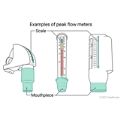Our Health Library information does not replace the advice of a doctor. Please be advised that this information is made available to assist our patients to learn more about their health. Our providers may not see and/or treat all topics found herein.
Asthma: Measuring Peak Flow
Overview
It's important to know how well your lungs are working. One way to do this is by checking your peak flow with a peak flow meter. Your peak flow can tell you if your asthma is staying the same, getting better, or getting worse. It helps you know if you need to take action.
How do you measure your peak expiratory flow?
Getting started
To perform the peak expiratory flow (PEF) test, you need a peak flow meter. A peak flow meter is an inexpensive handheld device you breathe into as hard and as fast as you can.
Read and follow the instructions included with the peak flow meter. Ask your doctor to show you how to use this device before you use it at home. If you have questions about how to use a peak flow meter or how to read the results, talk with your doctor.
If you use medicine to help with breathing (such as for asthma), talk to your doctor to learn how long you should wait to test your lung function after taking your medicine. You may need to wait a few hours after taking the medicine to do the test. Or your doctor may recommend that you test your lung function in the morning before you take your medicine.
Avoid eating a heavy meal before performing a PEF test. Be sure to sit up or stand up as straight as possible to help you take as large a breath as you can. Use the same position every time you test your PEF. Peak flow monitoring relies on your trying as hard as you can. For accurate results, be sure to give the test your best effort every time.
Measuring your peak flow
Peak flow meters come in many shapes and sizes, but they work about the same. Follow these steps to measure your peak flow.
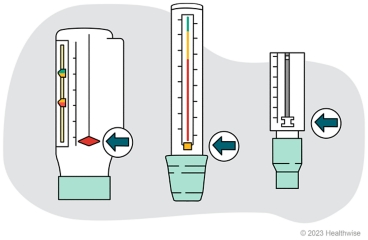
1. Set the pointer of the peak flow meter to 0 or the lowest number on the meter.

2. If there is a separate mouthpiece, attach it to the meter.

3. Sit up or stand up as straight as you can. Take a deep breath.
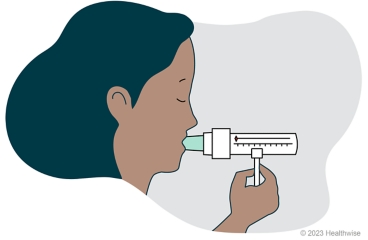
4. Close your lips tightly around the mouthpiece. Keep your tongue away from the mouthpiece. Keep your fingers away from the number scale.
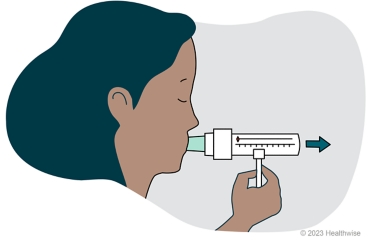
5. Blow out as hard and as fast as you can.
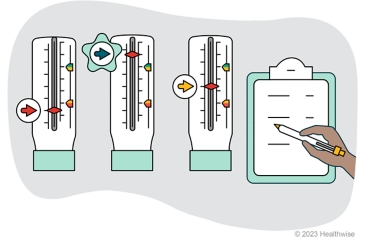
6. Note the number on the meter, and write it down. Do the test 2 more times. The highest of these 3 tests is your peak flow.
Credits
Current as of: October 25, 2024
Current as of: October 25, 2024


